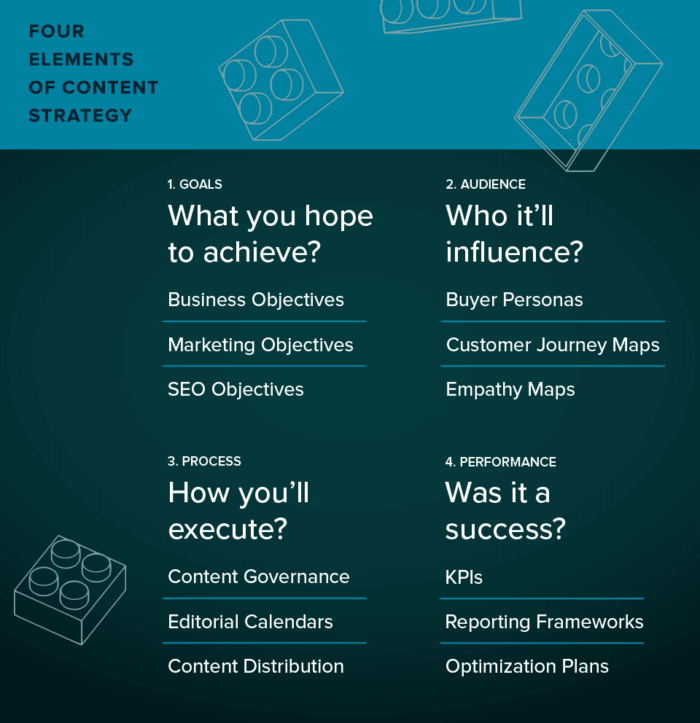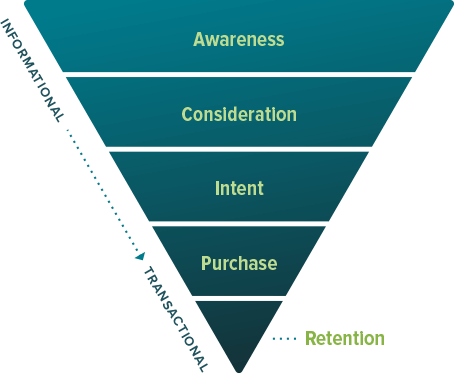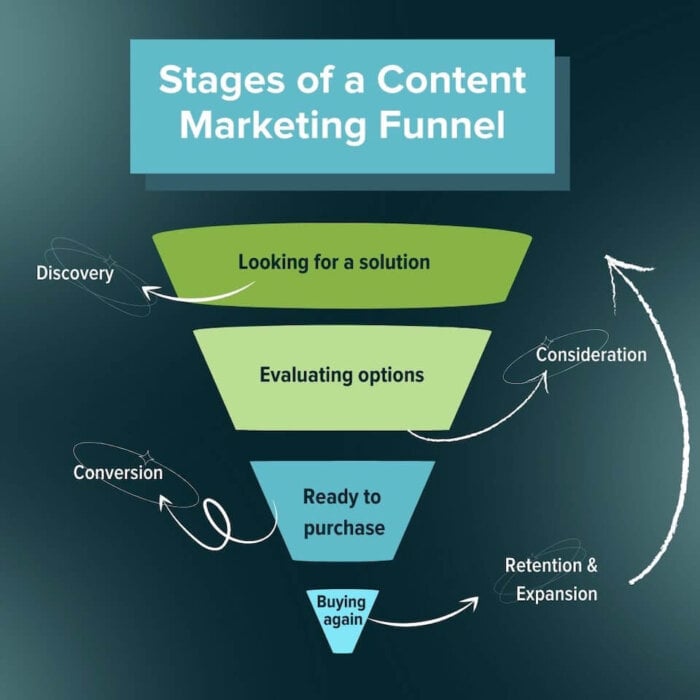
How to Develop a Content Strategy in 13 Steps
Aug 28, 2023|Read time: 23 min.
Key Points
- Content strategy is the higher-level planning process for how you’ll craft, distribute, and promote content. It may also include how you’ll engage your audience, drive traffic and leads, and achieve other business goals.
- Content strategy allows brands to create measurable, repeatable, iterative content to support and grow audience connections.
- Top-tier content strategy leverages consumer insights that reveal what people want regardless of where consumers enter the buyer’s journey.
Over the years, content strategy has continuously evolved alongside shifting marketplaces, changing ranking signals, and the emergence of new platforms. The dynamic nature of the content marketing industry demands scalable strategies that grab attention and build trust with consumer audiences.
Without the right content marketing strategy, you won’t know what your audience wants. You can’t deliver content-based solutions. And building those important consumer relationships will not happen.
Brands gain substantial upside in developing a strategy, investing in creation and distribution, and truly connecting with consumers.
Today, businesses need more than exceptional offerings; they must also build a rich network of content to connect and engage with would-be customers.
Here we’re discussing how you can build an effective content strategy.
What is content strategy?
Marketing term
Content Strategy
Content strategy refers to a brand’s overarching content process and practices including planning, creation, publication, management, and content governance.
A content strategy defines how your brand will engage a target audience and drive traffic, generate leads, make sales, and achieve other business goals.
Reaching an audience and garnering trust requires a sophisticated and consumer needs-driven approach.
Content strategy vs. content marketing
If content strategy is the overarching content process that directs the brand’s content at a high level, content marketing is the “doing” activity that includes organizing, scheduling, creating, publishing, and promoting content pieces.
Content marketing is made up of the individual tactics that flow from the content plan, sometimes known as a content calendar or editorial calendar.
The content plan is a content management tool that defines what exactly to create (when and where), how you’ll prioritize and execute tasks, and support the goals set in the higher level content strategy.
| Content strategy | Content marketing |
|---|---|
| High level, overarching content process | Individual tactics and content pieces that make up the strategy |
| Drives planning, creation, publication, management, and content governance | Drives specific execution of organization, scheduling, publishing, and promotion of content |
| Defines how your brand will use content to drive business outcomes | Defines the specific distribution and promotion methods to achieve business outcomes |
Content Strategy Playbook
The Fortune 500 CMO’s guide to content strategy.
The benefits of content strategy
Again and again it’s proven that brands that have a documented content strategy have more opportunities to truly and intentionally connect with their audiences and consumers in general.
An effective strategy impacts everything from brand awareness to equity, trust, and more. In the B2B space, as well as B2C, a strong content strategy boosts results and ROI.
Here are some recent statistics that highlight the benefits of content marketing:
0
%11% of marketers rate their content marketing strategy as excellent.
–CMI0
%Content marketing costs 62% less than traditional outbound marketing.
–CMIContent strategy is one of the most important components of your marketing strategy because it dictates:
- What you want to accomplish
- Who you need to reach
- What types of content to publish
- How content will support the brand
- How to differentiate your content
- Ways to promote your content
- Metrics that define success

A well-executed strategy establishes a brand’s culture of content, it allows marketers to measure content marketing ROI, maintain accountability, and ensure ongoing predictable business results. It takes time and money to create great content but it’s critical to have a well-organized plan to achieve marketing wins. Learn what to include in a content strategy template.
13 steps to a winning content strategy
Here’s how to build winning content strategies that create real connections and measurable results:
1. Define your goal
Before you launch any new content marketing strategy, it’s important to establish clear business goals and KPIs. After all, without content goals you can’t develop a strategy, measure program success, or communicate ROI to company stakeholders.
Focus on outcomes
Goals compel action and drive your content strategy, so build your goals around the outcomes you want to achieve.
- Want to improve organic traffic?
- Do you want to target a specific segment of users?
- Are you trying to increase conversions?
- Do you want to drive more user engagement with your content?
- Do you want to build more authentic connections by solving audience pain points?
Prioritize
Got a set of goals and business outcomes for your content strategy? Divide them up by importance (immediate actions to long-term efforts) and prioritize your goals. Often, you cannot just easily divide them into discrete actions, but the S.M.A.R.T. goal framework can help.
Set stretch goals and S.M.A.R.T. goals
When setting goals, experts agree that you’ll achieve more by following a two-tier structure: stretch goals and S.M.A.R.T. goals.
Stretch goals: Stretch goals are the aspirational, often major, quarterly or annual milestones designed to push your team to achieve more ambitious outcomes.
S.M.A.R.T. goals: S.M.A.R.T. goals are specific, measurable, achievable, realistic, and time-constrained (having a clear deadline). Consider these your process goals to ensure that you do the necessary tasks to achieve your stretch goals.
These two types of goals support each other and help to define your strategy. For example, imagine that your stretch goal is to increase organic website traffic to your content by 100% within a year. Here are a few S.M.A.R.T. goals that might support that initiative:
- Publish 25 blog posts each month
- Record a weekly podcast and accompanying SlideShare
- Engage with 100 third-party publications monthly
As you can see, it would be hard to achieve a stretch goal without a structured digital marketing plan in place, and vice versa. This system can help teams of any size define their goals, and set a clearer path to achieving them from the jump.
2. Know your audience
Traditionally, knowing your audience comes down to audience segmentation, research, and data collection and analysis. These are all still highly important to a coherent content strategy, but our addendum here is search data. More on that after a discussion of the fundamentals.
Audience segmentation
Developing a content strategy that targets the wrong audience wastes time and money. That’s why getting this right is so important.
For example, if you’re in the financial services industry, one audience segment might be recent college graduates with more than $10,000 in debt who might be interested in refinancing. Or, it could be females with a net worth of $100,000 or more who are candidates for investing advice. Another segment might be families with a net worth of $10 million or more who are prime candidates for estate planning guidance.
An audience segment may not reveal the characteristics of buyer personas within that market, but it’s a useful framework to help you make your marketing more targeted. And the more targeted your marketing, the more likely it is to be effective (and efficient).
Demographics
There are many different types of criteria and demographic data you could use to segment your audience, depending on what your business sells and how diverse its reach is. For instance, buyer characteristics for B2C marketing might include:
- Age
- Gender
- Location
- Family status
- Income level
- Disposable income
- Interests
- Goals
- Products desired
- Product attributes
- Pain points
- Occupation
For B2B marketing, on the other hand, you might include:
- Job title
- Department
- Division
- Industry
- Company size
- Decision maker
- Business goals
- Impact of goals
- Pain points
- Effect of frustrations
- Products desired
- Product features
Data sources and insights
Fortunately there are plenty of places to glean audience insights, including:
- Social media platforms
- Email marketing data
- Google Analytics data
- Behavioral intelligence
- Survey data
- Analyst reports
- Customer interviews
- Interviews with salespeople
- Interviews with support teams
Use that data to define your target audience segments and then create personas within each segment.
Search intent data fuels consumer insights
Ultimately, audience segmentation is about developing a clear understanding and picture of who you’re targeting. This understanding is driven by the consumer insights your analysis generates. One of the most revealing consumer insight sources is search intent data.
Marketing term
Search intent data
The overall collection of internet searches (Google, Bing, etc.) performed by real consumers seeking different things in search engines.
Billions of searches are collected and brands can operationalize that data, creating uniquely detailed, honest, and personal insights about what consumers want.
Brands can then use these insights to fuel all the content processes that drive authentic consumer connection. Search intent can also be leveraged to build stronger personas.
3. Develop personas
A buyer persona is defined as a semi-fictional representation of an ideal customer based on common audience attributes. These may include pain points, customer needs, interests, demographic information, as well as other factors as listed above.
The main difference between a buyer persona and an audience segment is that buyer personas force you to think about your audience as an individual, rather than a group. And within each segment, you may have multiple buyer persona examples.
While you develop your personas, think about your customers’ core problems as well as the outcomes they want to achieve. Furthermore, consider the external influences that may impact how your audience acts. These might include social movements, political beliefs, laws, where they live or work, etc.
It’s easier to influence your audience when you know what they care about. And with all that audience segmentation work, you’ll truly understand how to deliver on their needs.
Buyer Persona Template
Build better buyer personas to meet your consumers’ needs.
4. Audit existing content
Learn how to conduct a content audit to identify and inventory all existing brand content and to evaluate its effectiveness. An audit helps you to determine if you have:
- Competitor content gaps
- Customer interest content gaps
- Missing steps in the customer journey
- Irrelevant content
- Underperforming pages
When reviewing and assessing your content, it isn’t enough to know who your customers are. In order to have a strong and differentiated content strategy, you should also do a competitive analysis.
However, don’t just look at your direct competitors’ content strategy. Major e-commerce brands often lose traffic to review sites and industry blogs with a strong SEO strategy. Financial services firms often lose search engine rankings to lead generation websites and publications. So, take note of all the websites vying for your customers’ attention within the Google SERPs.
Scrutinize everything you’ve published.
For example, an inventory of your blog posts might reveal that some are outdated, not aligned with business goals, or not performing well in organic search. You can then decide whether you want to:
- Delete irrelevant posts
- Update outdated content
- Combine multiple posts into one consolidated, more valuable post
- Create completely new content pieces
5. Map the customer journey
Customer journey mapping helps you identify key moments that influence the buyer’s decision, such as when they realize they have a need, when they discover a solution, and when they make a decision.
The Conversion Funnel
Once you define your audience segments and buyer personas, map the customer journey of each persona throughout the buyer’s funnel, including:
- What do potential customers do?
- Where do they go online?
- What information do they want?
- How is the content presented?

Additionally, what questions do they ask themselves when they search? Alfred L. Yarbus, a Russian psychologist, conducted a study on eye movements. Participants were asked to look at paintings. Yarbus asked a certain question, then he tracked the eye movements of each participant.

What he found was that participants looked at completely different parts of the painting depending on the question they were asked beforehand.
Essentially, our brains are hardwired to find solutions to specific questions we ask ourselves. So, it’s critical that you strive to answer your audience’s burning questions all the way through the conversion funnel.
Targeting stages of the funnel

For example, a blog post may target a generic head-term in your industry to capture those just beginning the buyer’s journey. The post may answer key questions and offer potential solutions.
Or, it may be an entertaining or intriguing piece meant to expand reach and capture attention.
Another blog post may target the middle of the funnel when the prospect has done their initial research and begins to engage with various brands or vendors.
At this point, the prospect may want more detailed and customized content focused on specific products, services, solutions, features, and benefits.
Finally, at the bottom of the funnel, prospects want to compare options and make a final decision. To turn their curiosity into a conversion, provide an ROI calculator, detailed case studies or offer a free trial or coupon.
A new perspective on the customer journey
The above is a traditional method for mapping the buyer’s journey. And while it still works, consumer behavior is constantly shifting — which may result in evolutions of the journey.
For more about customer journey non-linearity, see Why Building Authentic Customer Connections Is Hard.
We also recommend reading Rethinking the Buyer’s Journey to get up to speed on the modern buyer’s journey, including the 95/5 model.
6. Perform keyword research
Whether your primary goal is lead generation or to increase ecommerce sales, you need traffic. But you won’t attract thousands of visitors to your site with good content alone. You need to optimize for keywords too.
Keyword research is the foundation of an SEO-focused content strategy because it guides you to the most valuable topics and keeps you organized. With thorough keyword research, you’ll be able to cover topics thoroughly without writing the same blog post five times. That means more traffic, more engagement, and more conversions.
Where do you begin? Use tools like Ahrefs and Semrush to uncover the topics in which your audience is most interested. You can also use SEO tools to spot your competitors’ top pages as well as the head terms and long-tail keywords driving most of their traffic.
Confirm the questions that your audience asks online, as well. Use tools such as Answer the Public and Answer Socrates or Google Question Hub. This gives you the strategic opportunity to be first to answer an important question. You can also confirm the “People Also Ask” (PAA) boxes in the Google SERPs for your target keywords.
Firstly, you’ll need to identify relevant keyword phrases and questions to target, and you note the search intent behind each one. Then, it’s time to create content.
7. Choose a content management system (CMS)
If you plan to produce a massive amount of content, you’ll need a robust Content Management System (CMS). Your CMS allows you to create, organize, publish, and store various kinds of content, including blog posts, audio, video, PDFs, etc.
Fortunately, there are plenty of options to choose from depending upon your needs.
For large ecommerce stores, for example:
Magento — Supports more than 200,000 online stores across 20+ industries
Sitecore — Often used for enterprise websites that need strong security and scalability WordPress– has the largest market share of any CMS
Drupal — A good option if you need extra customization and data management capabilities
8. Build content development process and calendar
Content development
Your content won’t create itself, so you need a clearly defined, repeatable, structured content strategy development process. The right methodology ensures that you always create high-quality, high-value content.
Your process should include:
- Keyword research
- Title
- Content brief
- Draft
- Edit
- Revisions
- Media selection
- Layout
- Optimization
- Browser preview
- Publish
- QC
Clarify who will be responsible for each task and by what deadline. In addition, standardize your content tech stack and workflow. Beyond your CMS, there’s project management software, grammar checking software, SEO software, and much more.
Content calendar
A content calendar is much more than a simple schedule. It’s also an organizational structure that aligns your content team with your broader marketing tactics and goals.
An effective content calendar should tie each piece of output back to your S.M.A.R.T. goals so you can track performance. It also helps you prioritize items that are likely to have the greatest impact. Depending upon your organization’s goals, your content calendar should include the following types of information:
- Title of Content Piece
- Target Audience Segment or Persona
- Content Format
- Author
- Content Brief Due Date
- Draft Deadline
- Editing Deadline
- Design & Development Deadlines
- Publication Date
- Target SEO Keyword(s)
- Associated Keyword Query Volume
- Comments or Other Information
Do you publish multi-format content such as a blog post that includes a video or an infographic? Then, create a separate line item in your calendar for each component.
Your editorial calendar should be accessible online by your internal team. Keep it clean and skimmable so it’s easy to see what you published, what’s still in process, and what’s on the back burner.
For keyword-focused content, track scores from SEO tools such as Clearscope, MarketMuse, SurferSEO, and similar alternatives to ensure content meets your threshold.
A content calendar keeps the entire content production process on track. It ensures that deadlines are met and that last-minute “fire drills” can be averted. Your content schedule helps the entire team stay organized and on pace to hit your goals.
Content Calendar Template
Strategically plan and organize an effective content strategy.
9. Define your content distribution and amplification strategy
Your content strategy doesn’t end when you publish a blog post or a video. Think about it. You’ve invested a great deal of time and money to produce compelling content that you expect to deliver results. So, don’t share it one time and move on to the next project.
Instead, build amplification into your content strategy process. Share posts multiple times across several social platforms such as Twitter and LinkedIn. Execute blogger outreach to online publishers, and even other businesses to promote your blog posts, graphics or videos. Also, don’t be afraid to run paid ads. Just make sure you understand the ROI before you go on a spending spree.
Content distribution is a powerful way to increase website traffic. If you’re smart about content promotion and distribution, you’ll see a compound effect from your marketing efforts. One publication may share it with its audience, who in turn then share it with their individual networks, etc.
10. Brainstorm content ideas
Next, use your list of keywords to brainstorm new content ideas. But, how do you create unique, usable content when there are more than 4.2 billion web pages competing for attention?
Fortunately, the vast majority of indexed web pages are terrible. So, take that golden opportunity to iterate and improve upon what already exists!
A key to producing great content is to use a process of iterative ideation. As author Steven Johnson shows us in his book, Where Good Ideas Come From: The Natural History of Innovation, the best innovative ideas are typically iterative, take shape over periods of time, and often occur in the realm of the “adjacent possible” (relying directly on previous knowledge).
So, don’t waste time looking for the one thing that hasn’t been written. Instead, brainstorm new ways to approach an old dusty topic, or cross-pollinate two separate ideas to forge something unique.
Not sure where to begin? Tools like Buzzsumo can provide insight into engagement, while Ahrefs and Semrush are excellent for shedding light on keyword rankings, backlinks, and traffic.
After you identify the top performing content for each keyword, knock it out of the park with something 10X better. Here are several ways to improve your existing content:
- Leverage proprietary data
- Visualize boring topics with graphics
- Simplify or break down a complex topic
- Combine related content into a comprehensive guide
- Use explainer videos within your copy
- Create something 10X more entertaining
11. Plan a variety of content types
With atomization in mind, make an effort to vary the types of content marketing in your content strategy. Each demographic consumes media differently, so keep your buyer personas in mind while you brainstorm.
Even if your target audience segments are relatively the same demographic you should still mix things up. For example, some people prefer visual content, some are auditory learners, and others prefer to read text.
Consider using some of the following formats in your content strategy:
- Blog Post
- Article
- Whitepaper
- Ebook
- Guide
- Case Study
- Interview
- Checklist
- Template
- News
- Topic Cluster
- Infographic
- Data Visualization
- Survey
- Presentation
- Video
- Podcast
- Demo
- Interactive tools
- Etc.
Develop a content creation strategy with different learning types and scalability in mind.
For example, you could create a survey as your base piece of content. From the insights that you collect, you can shape the takeaways into everything from infographics to videos, podcasts, blog posts, checklists, templates, social content, presentations, etc.
And don’t forget to distribute the different content types appropriately. For example, if you created a video, upload it and optimize it for YouTube. In this way, you’ll have a broader reach. A prospective customer may find your content, for example, in your blog, but another may run across the video version in YouTube or a podcast episode in Spotify.
Atomize
Content atomization is the process of breaking down large topics into smaller elements that can be used as additional content. But it isn’t just limited to blog posts.
We use this process to rapidly generate relevant content without much additional time investment. Basically, a given blog post can be turned into:
- An infographic
- A byline
- A white paper or case study
- A social media post or series
- Video content
- Graphic elements
- Downloadables
- An email or email series
When you start to think about each piece of content from the atomization perspective, the challenge of building content breadth and depth gets easier. Before we draft content, we develop a brief that contains this table:
| Channel | Candidate (Y/N) | Strategy Notes |
| Social | Y | |
| [Channel] | [Y/N] | |
| [Channel] | [Y/N] | |
| [Channel] | [Y/N] |
We fill it in and this helps us zero in on the atomization opportunities. We recommend this little hack.
The Brand Intelligence Report
Exclusive AI insights, search trends, and brand strategies, delivered to your inbox.
12. Establish your content governance structure
Content governance — the framework for how you generate, publish, and manage your content strategy — is vital, especially for larger organizations that need to leverage content. Content governance deals with how a content strategy is implemented, and by whom.
Under the governance framework, you’ll find:
- Editorial calendars
- Style guides, brand voice, etc.
- Content audits
- All other aspects of cross-channel content management
Building a content governance model for your organization starts with several steps, but should be an evolving process. Typical steps include:
- Assigning your content team’s roles and responsibilities
- Creating workflows like the editing, QC, and audit process
- Establishing the standards and policies for all external-facing content
- Gaining organization-wide compliance with content guidelines
13. Execute on your ideas using the framework you developed
With the wealth of information, data, consumer insights, a fleshed out buyer’s journey, personas, formal processes, distribution and amplification plans, your content calendar, and content ideas ready to go, it’s finally time to execute.
Assign writers, editors, and needed review stages. Hire freelance writers or a content agency depending on your needs, budget, and scale. Push content creation, execute your amplification efforts, and assess. Iterate as needed. It’s wise to perform audits and other content assessments quarterly to see how things are going.
Stick to your content strategy but be adaptable and ready to tweak various inputs to steer towards the desired outcome.
Other important content strategy considerations
Below are some additional aspects to consider when crafting your content strategy.
Experience, Expertise, Authoritativeness, and Trust (E-E-A-T)
E-E-A-T is an acronym for Experience, Expertise, Authoritativeness, and Trust.
It’s the standard Google Quality Raters use to assess search result quality, from Google’s Search Quality Rater Guidelines.
Let’s discuss:
- Experience — Content demonstrates that the creator has the needed first-hand experience to cover the topic. This new ‘E’ was added in December 2022 with the idea that the best content is usually created by folks with substantial experience.
- Expertise — The content creator has the necessary knowledge of the topic for it to be reliable and trustworthy.
- Authoritativeness — The extent to which the website posting the content is a well-known source on the topic and the content creator is reliable on that topic.
- Trust — The most important of E-E-A-T, trust, according to Google, is the extent to which the page is accurate, honest, safe, and reliable. Low trust content necessarily fails the ‘E-E-A’ test.
Google demands content that demonstrates E-E-A-T across the board. Brands and content publishers must align their content with these standards, but should note that E-E-A-T is not a direct ranking factor. Make sure that your content strategy operates within this framework.
Your Money or Your Life (YMYL)
Some topics have even higher E-E-A-T standards.
YMYL are topics with the potential to significantly impact or harm one or more of the following:
- The person who is directly viewing or using the content
- Other people who are affected by the person who viewed the content
- Groups of people or society affected by the actions of people who viewed the content
Two big areas for brands to consider are medical advice and financial advice. Without meeting E-E-A-T qualifications (like having industry experts or medical reviewers), it’s tough to meet that important trust metric. Be prepared for YMYL.
Content strategy and SEO
Content strategy and SEO strategy go hand in hand. To be successful in both cases, you need to identify the questions, desires, pain points, and challenges your audience faces. Then, do strategic keyword research to determine how your audience seeks answers and solutions to their needs.
Finally, curate high-quality content and unique user experiences around these topics. This allows your brand to connect with your audience precisely at the time they are most receptive to your content.
Terakeet recently published two organic search market share reports for the beauty industry and the financial services industry that showcase the value of full-funnel content marketing strategy. Surprisingly, the largest brands worth billions of dollars are losing significant market share to online publishers with more robust, search-focused content strategies.
Align with search intent
We don’t create content stuffed with keywords for algorithms. We create content to draw in our customers and foster brand love. To create content that resonates with your audience, you must understand user search intent.
In other words, make sure that you’re providing the type of content, information, and answers that someone searching on a given keyword is actually seeking.
Intent really matters. If someone is searching for educational information and all you have to offer is a product, Google will likely identify the disconnect and display other content at the top of the SERPs instead of yours. Similarly, if they are looking for a checklist and you’re not serving that up in your content, you’ll likely miss the mark again.
Aligning with search intent is a cornerstone of Google’s algorithm. This is evidenced in Google’s Quality Rater Guidelines. Section 12.7 of the Guidelines is labeled “Understanding User Intent,” with five sub-sections.
Launch topic clusters
Topic clusters are a particularly effective way to increase organic traffic for relevant keywords. Even better, they offer a full-funnel approach to marketing that engages your audience throughout the customer journey.
A topic cluster is a hub-and-spoke model of content production. It contains a central pillar page (the hub) that thoroughly addresses a broad topic at a high level.
The pillar page is supported by a number of related, longer-tail cluster pages (the spokes) that address specific subtopics in a much more in-depth fashion than the pillar pages. The pillar page connects to all of the cluster pages and vice-versa through internal links using thoughtful and descriptive anchor text.
Topic clusters are like concentrated buckets of relevance. They help search engines understand the context, relationships, and hierarchy of each page within a family of content. At the same time, they help your audience find answers and related information easily.
Content strategy success metrics and KPIs
Putting together an overarching content strategy and actually creating one that works and achieves your business goals are two different things. Did you achieve success? The only way to know is to perform ongoing observation, testing, and analysis over different KPIs and metrics.
Your content strategy KPIs should define success in terms of your marketing objective. So, if you care about conversion rates, include them. Don’t make the mistake of reporting against dozens of metrics that don’t support your goals.
Here are a few KPIs to consider:
- Google rankings
- Number of ranking keywords
- Organic visibility percentage
- Google organic market share
- Traffic (organic, paid, or referral)
- Engagement
- Conversions
- Qualified leads
- Revenue
Determine how you will capture, analyze, and report against those metrics. For example, will you report performance against a baseline each month or against the previous month or previous year? Will you create a live dashboard or pull data from search engine optimization tools like Google Analytics, STAT, and SEMrush?
Finally, identify the individual(s) who will monitor and measure performance over time.
Future of content marketing strategy
Content marketing is constantly evolving, as are the spaces brands operate in. Consumer needs and expectations also evolve. Your content strategy must adapt as well.
The fact is, consumers are bombarded with content at every moment. There’s so much marketing noise and competition for attention that you might ask, “Is more content really the solution?”
Therefore, to build a successful content strategy, we say focus on quality. Quality of the solutions you offer. Production quality. And, most of all, quality of connection.
Brands need to be in the top 1%, producing content that people actually want, informed by search intent insights, that delivers on consumer desire. Content isn’t king. Connection is king. Knowing your customer and consistently helping them at all buyer’s journey stages is the key to authentic connections.
Content strategy and owned asset optimization (OAO)
A new connection paradigm is emerging, which centers consumer needs and creates the infrastructure to meet them, operating from a reception marketing perspective. We invite you to learn more about owned asset optimization (OAO) below:
Our blog is filled with OAO-focused resources as well. Browse them at your own pace.

Learn how consumer insights can drive consumer connection
What We DoUnlock instant access to 25+ digital marketing resources and the OAO 101 introductory email course to kick start your strategy.



